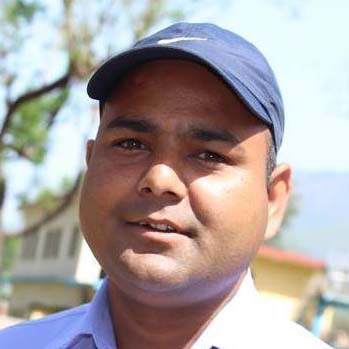National
No Dashain mood in earthquake-hit Jajarkot villages, two years on
Around 76,000 homes were damaged by the quake across Jajarkot and Rukum West on November 3, 2023. Most victims have yet to receive reconstruction aid.
Krishna Prasad Gautam
Until two years ago, Dashain time in most villages of Jajarkot meant vibrant gatherings—villagers coming together to set up swings, sing and dance and take part in various sporting activities. Those same villages lie eerily silent now. Struck hard by the earthquake that hit Barekot in Jajarkot district on November 3, 2023, the affected families have once again refrained from planting jamara, an essential ritual of the 15-day Dashain festival, in their temporary huts this festive season as well.
Hundreds of earthquake-displaced families are still languishing in the flimsy huts even after two years since the disaster.
In Chiuritol, in ward 1 of Nalagad Municipality, where 80 homes were damaged and 13 lives lost due the 6.4 magnitude earthquake, the customary jamara—seedlings of barley and other grains used during Dashain—have not been sown this year.
“Whenever the festival season comes, the pain of the earthquake, of losing my son, daughter-in-law and granddaughter, overwhelms us,” says 59-year-old Chandra Shekhar Mahar.
After five years away, Chandra Shekhar's son Dal Bahadur Mahar had returned home in early October 2023 to celebrate Dashain with parents. He had been living in India with his family, working as a security guard at a pharmaceutical company. Planning to stay through Tihar before heading back, Dal Bahadur, along with his wife Tulasa and daughter Anjila, tragically lost their lives in the devastating earthquake.
"For two years we have lived in temporary huts, so we didn’t even sow jamara this time as well," lamented Chandra Shekhar. His wife, Harimaya, points out that though they endured four months under tarpaulins and nearly six months in makeshift huts, they still have not received the promised second tranche of Rs25,000 for temporary housing. Without that, she says, putting up a proper shelter is not possible—or celebrating in any meaningful way.
According to Balibhan Mahar, another local, most households in Chiuritol did not celebrate Dashain last year, and many are still refraining from traditional observances now. “Before the quake, when Dashain came, we used to decorate our houses, buy new clothes, bring goats, and enjoy delicious food. Now, 8-10 people are crammed into a narrow hut—it’s suffering. Until permanent homes are built, Dashain or not, the pain is the same,” he complained.
Preeti Bahadur Budha of ward 6 of Nalagad echoes a similar ordeal. “Dashain was always full of food, games and dance. But disaster struck just before the festival. Life in a hut is hard. That’s why this year there is no jamara," he said.
Budha used to travel to India for seasonal work from April to October and again from mid-November to March, but since the earthquake, he has neither been able to go to India nor find any other employment in the village.
The emotional deprivation is backed by material hardship. According to earlier Post reports, some 76,000 private homes were damaged by the quake across Jajarkot and Rukum West; of those, approximately 48,500 households have been officially recognised as beneficiaries.
For the reconstruction of the ravaged private housing the federal government decided to provide Rs400,000 per household for destroyed homes, Rs250,000 for retrofitting, Rs100,000 for minor repairs, but disbursement has been slow.
Raju Prasad Paudel, the chief district officer of Jajarkot, said that local governments have begun signing agreements with beneficiaries for reconstruction. According to him, 600 beneficiaries in Bheri Municipality have already signed agreements, while recommendations have been received to include another 1,400 people. Nalagad Municipality has recommended nearly 3,000 beneficiaries, he added.
Paudel explained that ward offices must first sign agreements with beneficiaries, then forward the details to the Local Disaster Management Committee, which sends recommendations to the District Disaster Management Committee. “We verify the information sent by local units,” he said. “Only after verification does the reconstruction authority release the budget, and once the budget arrives, we transfer the funds to the respective local governments.”
The people's representatives, however, complained that hundreds of genuine earthquake victims have been excluded from the beneficiaries’ list while conducting the Detailed Damage Assessment by the National Disaster Risk Reduction and Management Authority. Bheri Municipality's Mayor Chandra Prakash Gharti accused the authority of arbitrarily conducting the DDA, leaving out genuine victims.
The federal government has allocated Rs 21 billion for reconstruction in the current fiscal year of 2025-26.




 5.13°C Kathmandu
5.13°C Kathmandu






%20(1).jpg&w=300&height=200)








